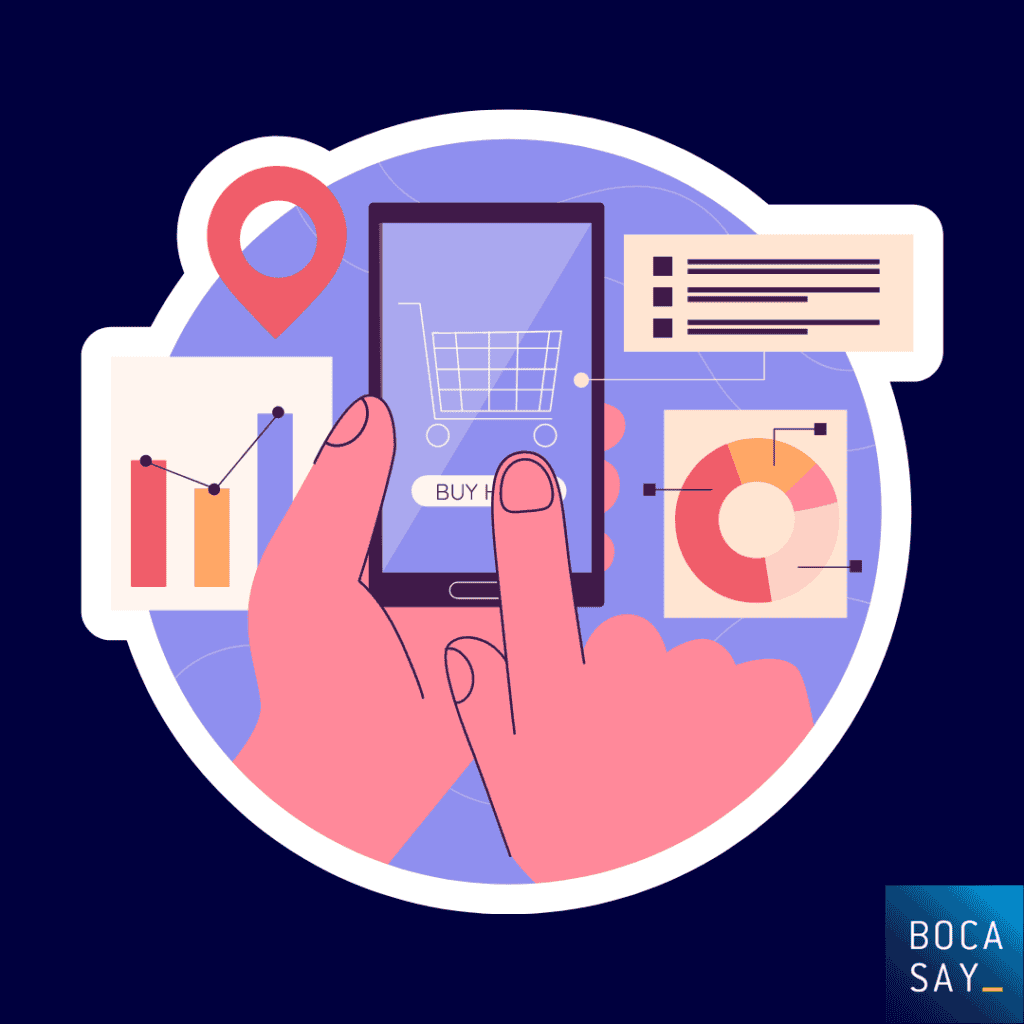What types of IT developments are there for e-commerce?
This article was created in order to provide you with some answers and thoughts on questions relating to the different types of existing software and IT practices for creating an e-commerce site. There are many computer languages and technologies that can be used to bring your e-commerce site to life. Let’s discover them together.

A first article clearing up the subject of the differences between certain definitions related to e-commerce, m-commerce, and marketplaces has already been written. It may be useful to read it before getting into this article.
Let’s start by listing some of the various platform models used for selling online:
- Online retail (B2C).
- Marketplace.
- C2C e-commerce platforms.
What you need to know about the development of e-commerce
1.The Framework
The main technology behind most merchant sites is the framework, which offers robust development tools to make the site easier to use and faster. There are several frameworks available for developing online stores, such as Shopify, WooCommerce, and Magento.
The most popular frameworks are:
- Magento
- Shopify
- WooCommerce
- Prestashop
- Drupal Commerce
- Zend Framework
Magento and Drupal Commerce are very powerful frameworks. However, which development technology you choose for your e-commerce site will depend on your needs and therefore the use case of your site. Drupal, for example, can offer an attractive user interface, while Magento is stronger when it comes to the safety and security of development processes.
2.Content Management System or CMS
The content management system (CMS) is a type of software that is used to design and update websites, in this case e-commerce sites. The characteristics of a CMS are:
- Allowing several individuals to work on the same document simultaneously.
- Separating management operations from design and content.
- Easily structuring content: FAQs, blogs, discussion forums, etc.
- Prioritizing users by assigning them roles and permissions.
- They include versioning (version management).
Thanks to a CMS, you will be able to easily create and publish your product sheets, configure your delivery options, etc.
3.CDN and database
The CDN (Content Delivery Network) and the database offer the possibility of saving or storing media (videos, images) in any format.
4.Landing page
As the name suggests, a landing page is a web page specially designed to welcome prospects. This page is very important because it features information designed to make prospects want to buy from your website or e-commerce site. The landing page has been designed and prepared to encourage the visitor to contact or purchase the product or service that’s being offered. So it is essentially a conversion page. In an e-commerce site or even any web application in general, the following pages are considered to be landing pages:
- Contact page
- Home page
- Page presenting a service or product.
The landing page must be created with care – you can base your online sales strategy on good landing pages. They are very useful for selling products on the Internet.
Important components of a successful landing page are:
- Powerful text
- An attractive user interface and layout that aligns with your market.
- The right CTA (Call to Action) button – in the right place.
- An attractive and fluid design with the fewest steps possible.
The personalized Home Page is the latest trend in e-commerce. Many big brands are trying to set up personalized homepages for each user. Myntra, an Indian fashion e-commerce site, is one of them.
Shamik Sharma, CTO of Myntra, said: “People don’t like shopping in a deserted mall. Version 2.0 will turn online fashion shopping into a social and personalized experience.”
Each user of the Myntra app now sees a different homepage based on their previous visits, history, preferences and other social media plugins like Facebook. A personalized home page significantly improves the shopping experience for users and helps increase sales.
What dashboards should you use for managing your e-commerce site?
The development of a dashboard is another important component for the development of a website or e-commerce application. Let’s take a look at some of the different dashboards you might need, depending on your market.
1.The administration board
Reporting and data analytics should be represented by graphics such as pie charts or line graphs. The graphic view offers an easy way to organize data, and above all to understand and interpret it in a way that supports your decision-making.
The main characteristics of a good admin table can be:
- Dashboard management
- Order and sales management
- Reports and analytical data
- Customer support system
2.Sales table
The main characteristics of a sales table can be:
- User registration and login
- Order transaction history
- Product List
- User and product management
3.User table
The main characteristics of a user table can be:
- Rapid search
- Filters and product categories
- Real-time monitoring and mapping of user actions
Product tracking is one of the essential characteristics of any e-commerce site. This function not only allows the user to track their order, but also increases confidence in your site and brand.
Do you have an online sales site project you want to set up? Are you looking for an IT service provider capable of supporting you throughout your project?
If you want to develop your e-commerce site with a reasonable budget, you’re in the right place.
Contact us and see how we can move forward on your project together.
We have many developers in our centers located all over the world: Vietnam, Madagascar and Mauritius.
Discover our catalogue of very competitive prices.